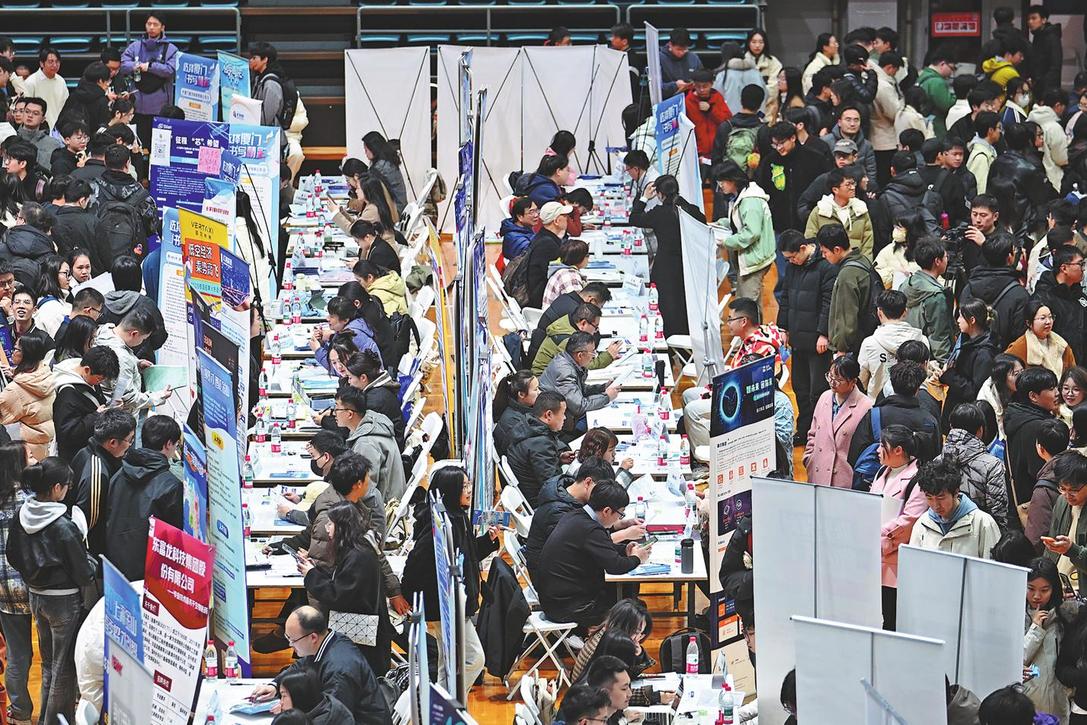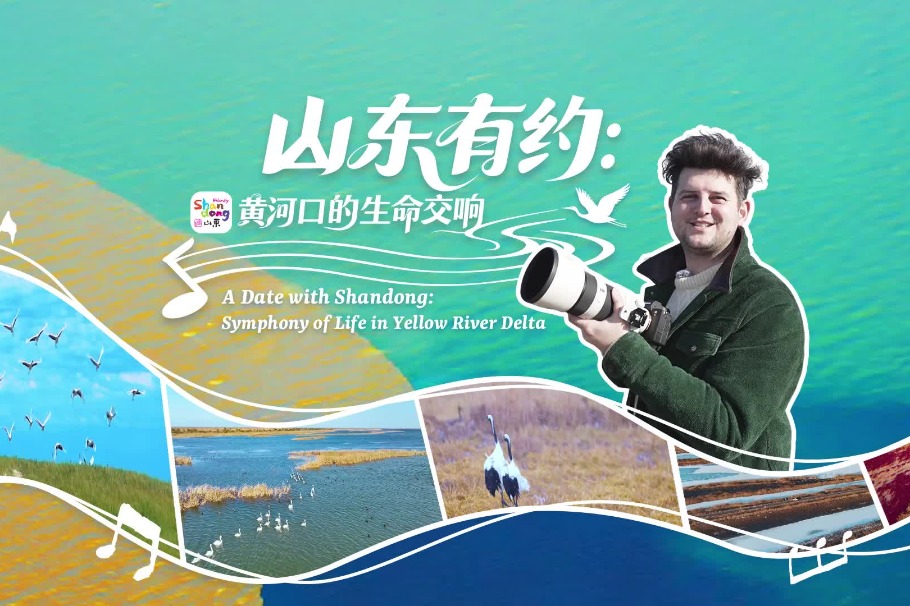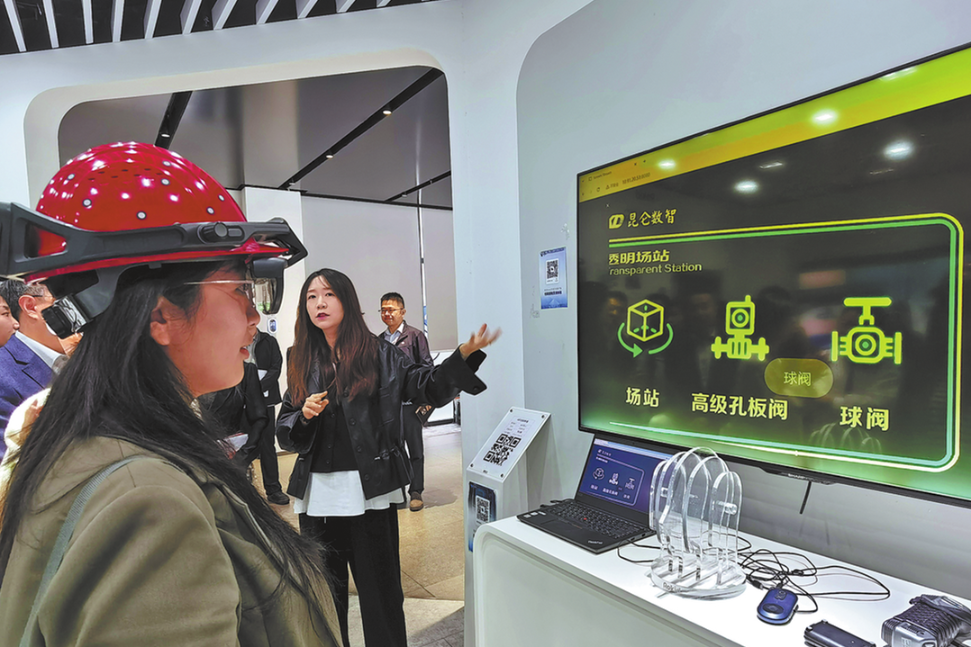Beautiful sight and sound in the cultural darkness
Three arts institutions hold an event to highlight creative opportunities for an overlooked and underserved segment of the population, Zhang Lei reports.

As the pandemic continues to affect people worldwide, it is often the most vulnerable who face the greatest challenges. Despite difficulties there have been many signs of resilience, hope and moments of unity where people from many varied backgrounds have come together to take part in cultural experiences.
Beijing Minsheng Art Museum, the Beijing Body ON&ON Culture Center, the latter committed to developing disability arts in China, and the British Council joined to hold the UK-China Disability Arts Forum on Dec 3, International Day of the Disabled, focusing on "inclusiveness, communication and creation".
The Chinese writer and theater director Chen Si'an, the illustrator and symbiotic dancer Zhai Jin, the visual artist Liu Yi, the British artist, producer and curator Cathy Mager, and the composer Ben Lunn were invited to talk about disability art communication and creation. They advocate openness and diversity, saying effective communication provides more opportunities for artistic creation.
Ge Huichao, founder of Body ON&ON, says:"Our ideal has always adhered to connecting different ethnic groups and civilizations with art as a medium, based on body and mind. Promoting social inclusiveness is also the main theme of the forum. We believe in the power of inclusiveness, communication and creativity, and look forward to having more organizations, institutions and practitioners joining the trend."
In addition to the live presentation of the forum at the Beijing Minsheng Art Museum, the forum was livestreamed and provided a full range of offline and online access support, including simultaneous interpretation in Chinese and English, video Chinese subtitles, full Chinese sign language translation, real-time Chinese subtitles and wheelchair-friendly venues in an attempt to encourage everyone to take part.
In the second half of the forum three short documentaries commissioned by the British Council and produced by the Access for Change platform were screened to show how disabled groups can connect with society through art in various ways. Access for Change is a co-creation mechanism launched at the second Disability Arts Forum last year. It is committed to promoting the connection of cultural and artistic venues, institutions and individuals and promoting cultural and artistic facilities.
The Making of the Audio-described Hé, jointly produced by the British Council, the Scottish Dance Theater and the Shanghai International Dance Center, explores the relationship between humans, nature and the environment. The special oral video version, voiced by the Chinese choreographer Wang Yabin, is made for the visually/hearing impaired, creating the possibility of equal enjoyment of art. During the production, two oral video consultants, Joey Zhu Junyi, who is visually impaired, and Tianna Tian Yunfan, who uses a wheelchair, devoted themselves to improving the writing and narration of the oral script from a unique perspective, helping to dictate integrated text and images. The short film records the process of the pair discussing the finiteness of language and the infiniteness of the body, and reflects their life forces.
In another short film, Know Deaf, the heroine Lili has lost her hearing after having a fever as a child. When she grows up she is committed to giving voice to the hearing impaired, especially projects that support hearing impaired children. This summer Lili was invited by the producer to serve as a charity planner. With the mentor Chen Si'an and teaching assistants, she took part in the completion of Snail Post Office, a writing and drama workshop for hearing-impaired children and adolescents in Chongqing.
They hope to accompany and support the hearing impaired to express themselves through writing, drama, performance and other art forms, combined with bilingual (sign language and spoken Chinese) communication, and to communicate and perform dialogue among themselves, others, nature and society.
The third film was presented by Easy Space, a disability friendly space in Beijing. Jie Xiaofeng, an architect, completed the transformation in a low-cost, integrated and co-creative way. Last month BEST Beijing Enable Sister Center, an organization that links and supports women with disabilities, initiated the art empowerment project. They invited Tu Bin, a drama instructor, for a tailored play that tells the organization's story for females who are concerned about disability issues. The project recruited 20 disabled and non-disabled actors, after eight rehearsals, hoping to present an inclusive work of art on stage.
"The forum is an opportunity to meet arts professionals who are pushing boundaries and producing exciting new work. Each year we try to create space for international networking and to showcase new art to help increase awareness of the issues that disabled artists face in China and in the UK," says Rehana Mughal, director arts China of the British Council.
"The arts offer a unique form of expression and the artists featured in this year's forum have a wealth of experience to share. This year we are featuring performing arts, visual art, curating, music, and filmmaking from the UK and from China. The fact that we had a long list of work to choose from is testament to the growth of art made by deaf and disabled people."
Special mention is given to Cathy Mager's Sign Night, a poetic sign language conversation between a pair of frustrated lovers projected on the buildings in the center of Bristol, England. Two hearing-impaired actors share their dreams for the future in sign language between buildings in the night sky. Sign Night was inspired by real-life events performed by actors who were isolated on their balcony of their homes during the pandemic. The performance adopts British sign language, which conforms to the use habits of the British deaf as the performance language.
The film explores the communication barriers caused by wearing masks and the social isolation that many deaf people have lived through the epidemic. The film, fascinating and touching, and starring Wilma Jackson and Sophie Stone, vividly expresses what the artist and director thinks. The performance in the film was inspired by a poem Mager wrote, which was completed through remote collaboration with hearing-impaired actors during lockdown.
The film was shot in a green screen studio, and all actors maintained social distancing during filming. Jon Street, a projection expert, collaborated with Mager to edit the film using 3D imaging software and visual special effects. In the end, one night, the video was successfully projected on a building in Bristol.
About 15 percent of the global population, almost 1 billion people, are disabled, yet many lack the support to be able to enjoy many of the experiences that able-bodied people enjoy.
Many disabled people choose not to try new cultural experiences because too often they are unaware of how accessible the experience will be for them, and this leads to fewer disabled people frequenting theaters, concert halls and museums.








Today's Top News
- Innovation to give edge in frontier sectors
- Sanctions on Japan's former senior official announced
- Xi stresses importance of raising minors' moral standards
- Coordinated reform key to country's growth
- Shandong gives new life to traditions
- China rebukes UK for 'interfering' in Hong Kong case






























